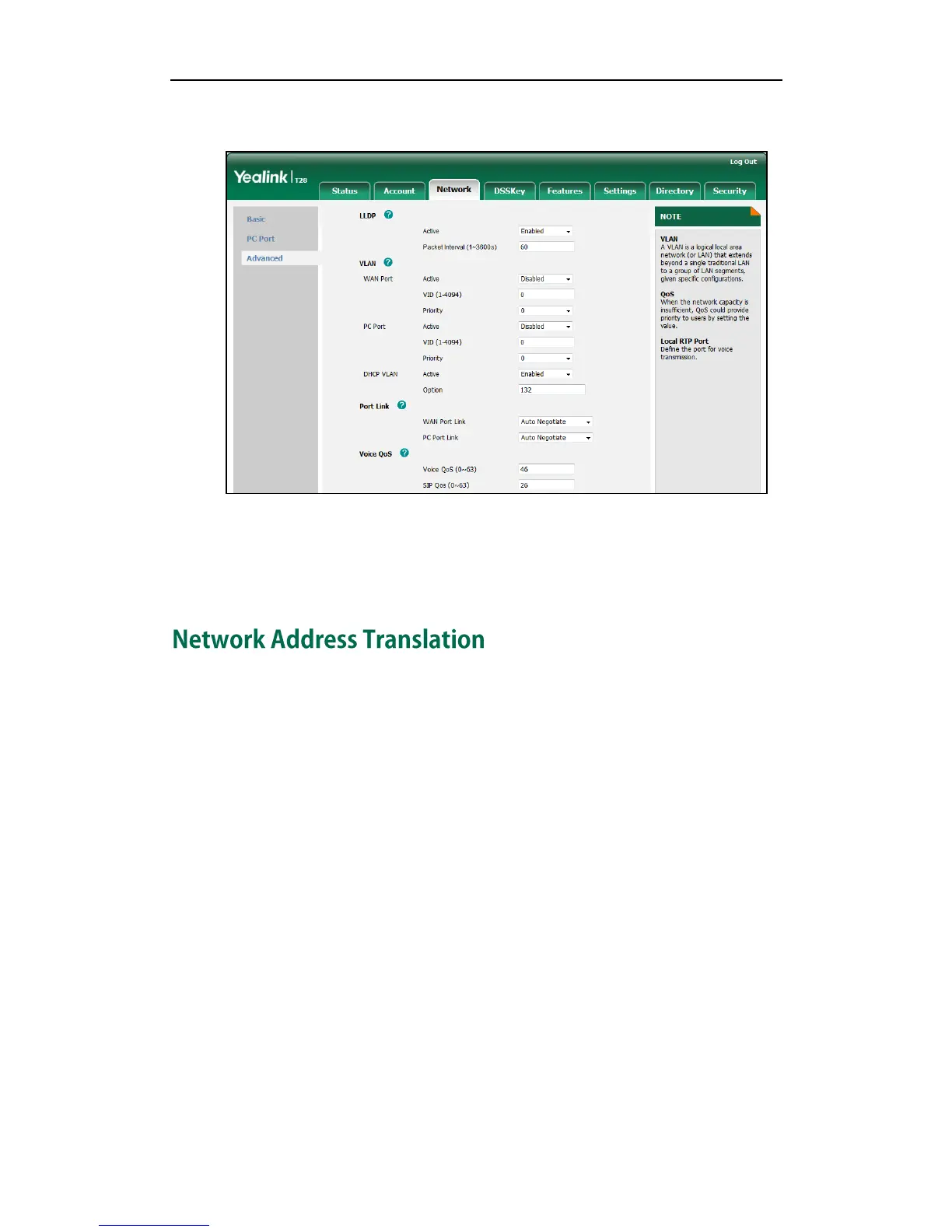Configuring Advanced Features
197
3. Enter the desired value in the SIP QoS (0~63) field.
4. Click Confirm to accept the change.
A dialog box pops up to prompt that settings will take effect after a reboot.
5. Click OK to reboot the IP phone.
Network Address Translation (NAT) is essentially a translation table that maps public IP
address and port combinations to private ones. This reduces the need for a large
number of public IP addresses. NAT ensures security since each outgoing or incoming
request must first go through a translation process. But in the VoIP environment, NAT
breaks end-to-end connectivity.
NAT Traversal
NAT traversal is a general term for techniques that establish and maintain IP
connections traversing NAT gateways, typically required for client-to-client networking
applications, especially for VoIP deployments. STUN is one of the NAT traversal
techniques supported by IP phones.
STUN (Simple Traversal of UDP over NATs)
STUN is a network protocol, used in NAT traversal for applications of real-time voice,
video, messaging, and other interactive IP communications. The STUN protocol allows
applications to operate behind a NAT to discover the presence of the network address
translator, and to obtain the mapped (public) IP address and port number that the NAT
has allocated for the UDP connections to remote parties. The protocol requires
